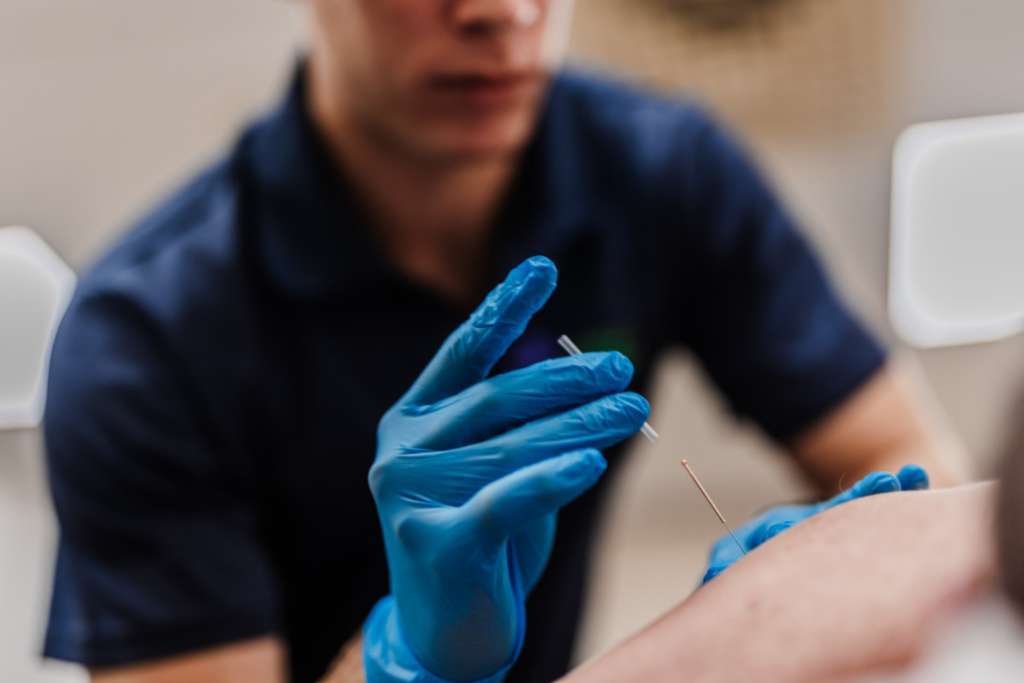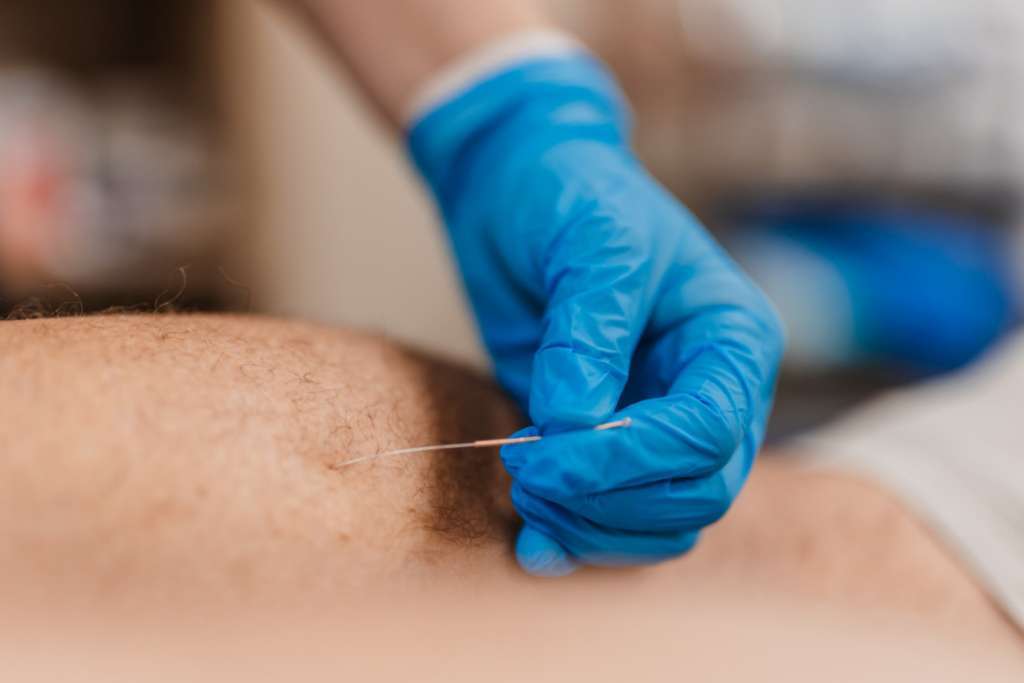Dry needling is when a fine filament needle is inserted into bodily tissues, without the injection of a substance such as cortisone (technically wet needling).
Trigger point dry needling is when the needle is inserted into an active trigger point within a muscle or connective tissue. The aim is to decrease pain and symptoms by producing a local muscle ‘twitch’ response in order to increase flexibility and normalise tone of the affected muscle. Other positive effects from dry needling may include increased blood flow and oxygenation to muscles, and decreased hypersensitivity of the affected and surrounding tissues.
What Conditions is Dry Needling Used For?
Trigger point dry needling can be used for a large number of musculoskeletal conditions. The effectiveness of trigger point dry needling often comes down to the skill of the clinician in finding the trigger points within the muscles and connective tissues. Some common conditions we treat with trigger point dry needling include but are not limited to:
- Low back pain
- Muscle strains /injuries
- Muscle tightness
- ITB syndrome
- Shoulder impingement
- Tennis elbow
- Headaches
- and many more…

Myofascial Pain & Trigger Points
Myofascial pain refers a large group of diverse musculoskeletal conditions that result in pain. These conditions affect muscles (‘myo’) and their connective tissue (‘fascial’) in any part of the body, resulting in pain. Often there is no specific cause or injury, making these conditions somewhat complex. The presence of a myofascial trigger point is one source of pain in these conditions.
A myofascial trigger point is a hyperirritable area, usually found within a tight band of muscle or connective tissue. They result in point tenderness, and when severe can cause pain referral into a different part of the body.
Why Do Trigger Points Occur?
There are many different ideas and opinions as to why myofascial pain and trigger points occur. The best theory we currently have is that trigger points occur in response to sustained or repetitive muscle contractions resulting in muscle overuse or trauma. It is believed that this results in a local decrease in blood and oxygen supply to the muscle. As a result, the muscle affected becomes overly sensitive to pain.
Signs and Symptoms
- Dull diffuse ache at rest that can be sharp with movement
- Increased muscle tension and tightness
- Possible pain referral into other areas of the body
- Muscle weakness in severe cases

Dry Needling Physiotherapists in Newcastle NSW
Always seek out physiotherapists who have been training in Trigger Point Dry Needling. The team at Peak Physio have are been trained in Dry Needling and have extensive experience utilising these techniques.
If you would like to book in for Dry Needling treatment in Newcastle, please give us a call on (02) 4929 3898 or book online.
